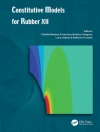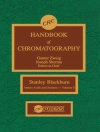This book explores the latest developments in electrochemical energy storage device technologies.
Das E-Book Novel Electrochemical Energy Storage Devices wird angeboten von Wiley-VCH Gmb H und wurde mit folgenden Begriffen kategorisiert:
Chemie, Chemistry, Electrochemistry, Elektrochemie, Energie, Energiespeicherung, Energy, Hydrogen, Batteries & Fuel Cells, Materialien f. Energiesysteme, Materials for Energy Systems, Materials Science, Materialwissenschaften, Wasserstoff, Wasserstoff, Batterien u. Brennstoffzellen
Daftar Isi
1 INTRODUCTION
1.1 Energy Conversion and Storage: A Global Challenge
1.2 Development history of electrochemical energy storage
1.3 Classification of electrochemical energy storage
1.4 LIBs and ECs: an appropriate electrochemical energy storage
1.5 Summary and Outlook
2 MATERIALS AND FABRICATION
2.2 Mechanisms and advantages of ECs
2.2.1 Categories
2.3 Roadmap of conventional materials for LIBs
2.4 Typical positive materials for LIBs
2.5 Typical negative materials for LIBs
2.6 New materials for LIBs
2.7 Materials for conventional ECs
2.8 Electrolytes and separators
2.9 Evaluation methods
2.10 Production processes for the fabrication
2.11 Perspectives
3 FLEXIBLE CELLS: THEORY AND CHARACTERIZATIONS
3.1 Limitations of the conventional cells
3.2 Mechanical process for bendable cells
3.3 Mechanics of stretchable cells
3.4 Static electrochemical performance of flexible cells
3.5 Dynamic performance of flexible cells
3.6 Summary and perspectives
4 Flexible Cells: Materials and Fabrication Technologies
4.1 Construction principles of flexible cells
4.2 Substrate materials for flexible cells
4.3 Active materials for flexible cells
4.3.1 CNTs
4.4 Electrolytes for flexible LIBs
4.5 Electrolytes for flexible ECs
4.6 Nonconductive substrates based flexible cells
4.7 CNT and graphene based flexible cells
4.8 Construction of stretchable cells by novel architectures
4.9 Conclusion and Perspectives
5 ARCHITECTURES DESIGN FOR CELLs WITH HIGH ENERGY DENSITY
5.1 Strategies for high energy density cells
5.2 Gravimetric and volumetric energy density of electrodes
5.3 Classification of thick electrodes: bulk and foam electrodes
5.4 Design and fabrication of bulk electrodes
5.5 Characterization and numerical simulation of tortuosity
5.6 Fabrication methods for bulk electrodes
5.7 Thick electrodes with random pore structure
5.8 Thick electrodes with directional pore distribution
5.9 Carbon based foam electrodes with high gravimetric energy density
5.10 Carbon based thick electrodes
5.11 Thick electrodes based on the conductive polymer gels
5.12 Summary and Perspectives
6 MINIATURIZED CELLS
6.1 Introduction
6.2 Evaluation methods for the miniaturized cells
6.3 Architectures of various miniaturized cells
6.4 Materials for the miniaturized cells
6.5 Fabrication technologies for miniaturized cells
6.6 Fabrication technologies for 2D interdigitated cells
6.7 Printing technologies for 2D interdigitated cells
6.8 Electrochemical deposition method for 2D interdigitated cells
6.9 Laser scribing for 2D interdigitated cells
6.10 In-situ electrode conversion for 2D interdigitated cells
6.11 Fabrication technologies for 3D in-plane miniaturized cells
6.12 Fabrication of miniaturized cells with 3D stacked configuration
6.13 Integrated systems
6.14 Summary and perspectives
7 SMART CELLS
7.1 Definition of smart materials and cells
7.2 Type of smart materials
7.3 Construction of smart cells
7.4 Application of shape-memory materials in LIBs and ECs
7.5 Self-heating and self-monitoring designs
7.6 Integrated electrochromic architectures for energy storage
7.7 Summary and perspectives
Tentang Penulis
Feng Li is Professor in the Institute of Metal Research at Chinese Academy of Science, China. After completed his Ph D, he stayed at Institute of Metal Research and continued with his research on novel carbon-based materials for energy applications, such as lithium ion batteries, lithium sulfur batteries, electrochemical capacitors and new concept devices. He has published more than 200 peer-reviewed articles. He received the National Science Fund for Distinguished Young Scholars by National Foundation of Science, China.
Lei Wen is Associate Professor in the Institute of Metal Research at Chinese Academy of Science, China. After his Ph D from Northeastern University, China, he worked as a postdoctoral researcher at Peking University, China. He joined the Institute of Metal Research in 2006 and his research focuses on materials for electrochemical energy storage devices. He has published more than 50 peer-reviewed articles.
Hui-Ming Cheng is Professor in the Institute of Metal Research at Chinese Academy of Science, China. After his Ph D from Institute of Metal Research, he worked at AIST-Kyushu and Nagasaki University, Japan, and then joined the Institute of Metal Research in 1993. His research focuses on low-dimensional materials for energy applications and he has published more than 580 peer-reviewed articles. He was elected as an academician of Chinese Academy of Sciences in 2013. He also won several awards including National Natural Science Award in 2006, the Charles E. Pettinos Award from American Carbon Society in 2010 and Utz-Hellmuth Felcht Award from SGL Group – The Carbon Company in 2015.












